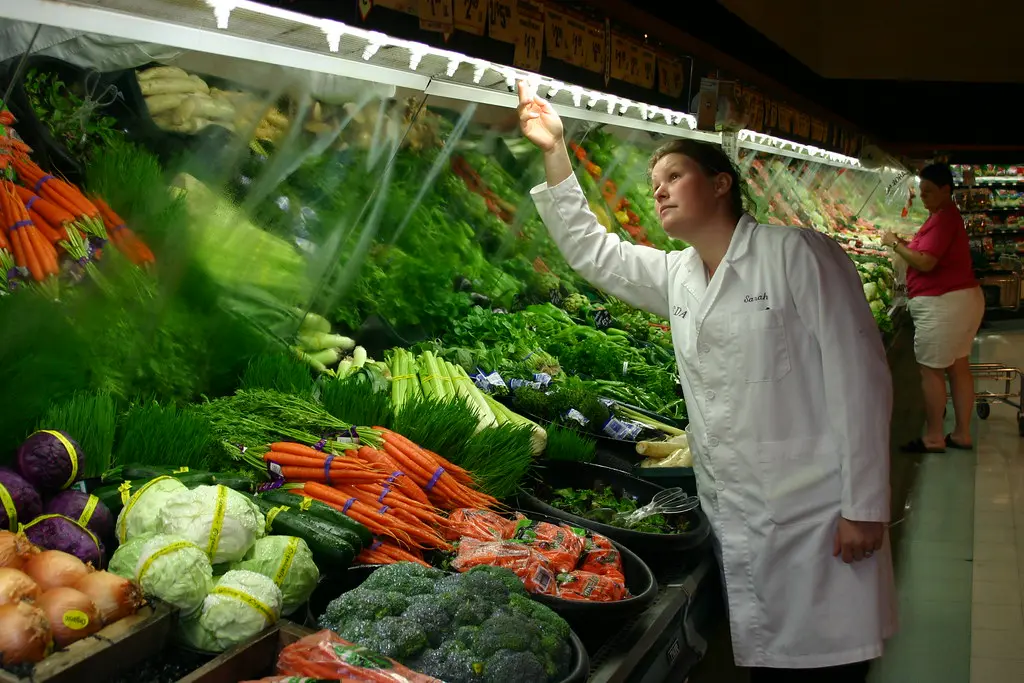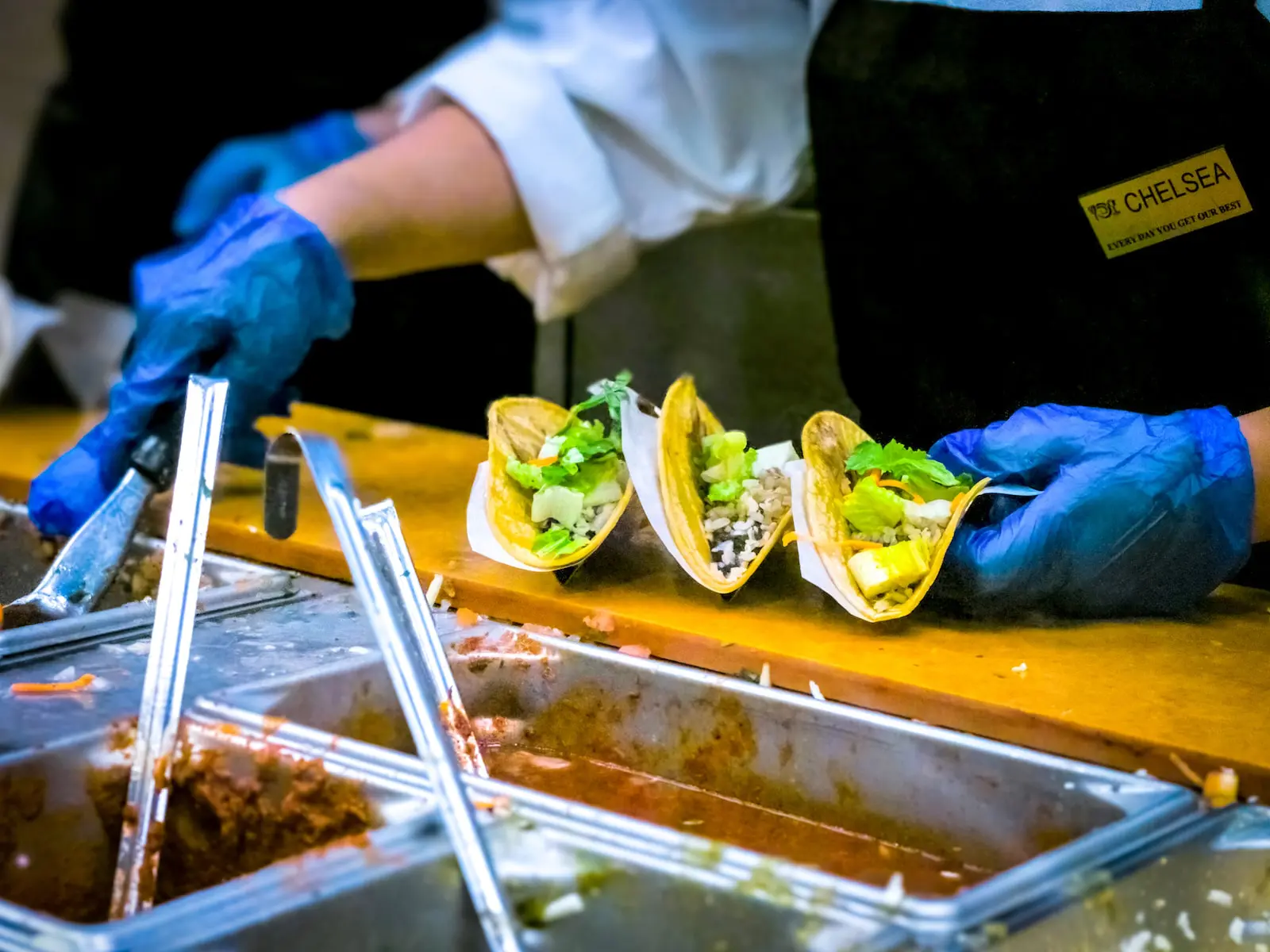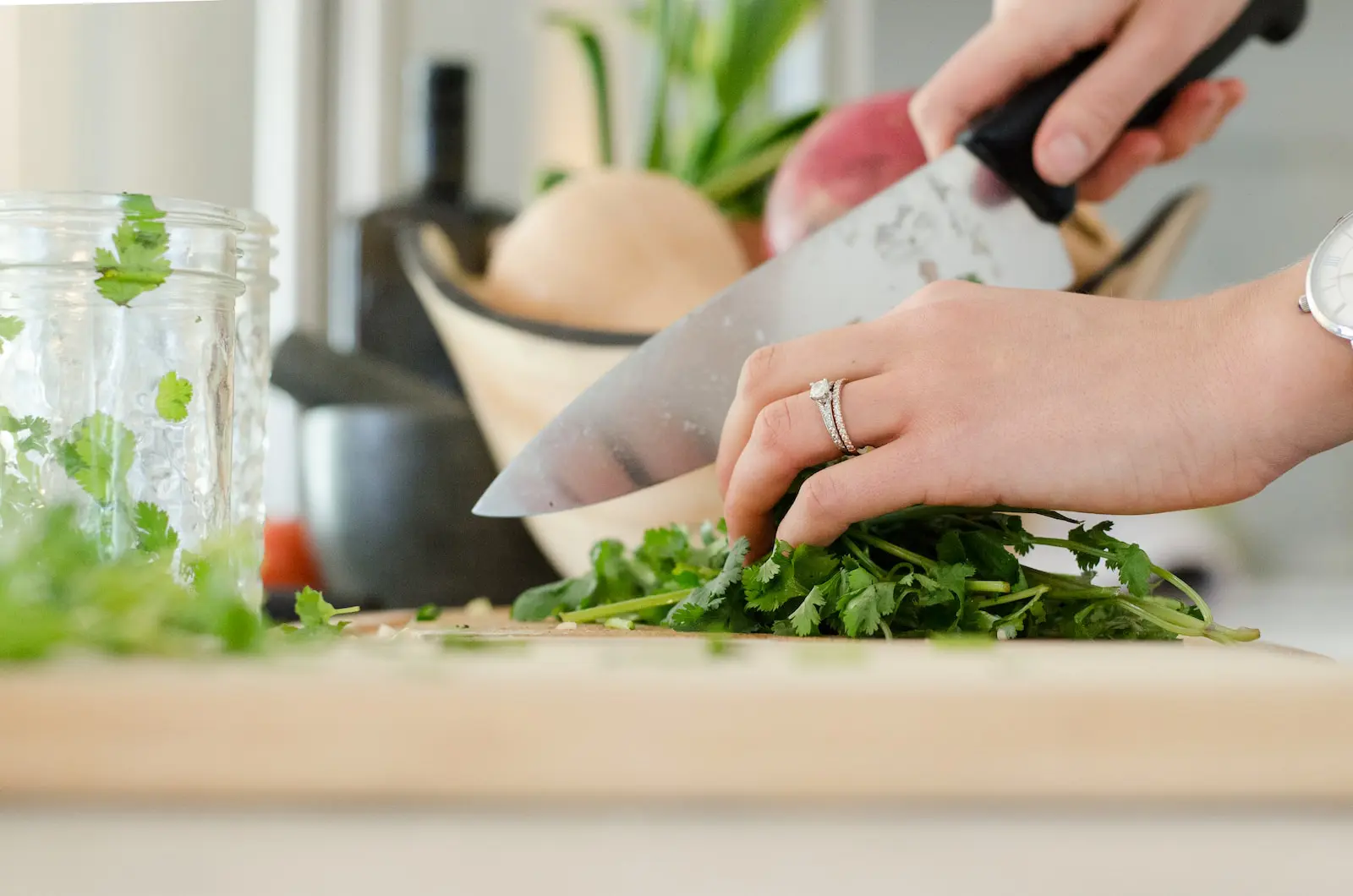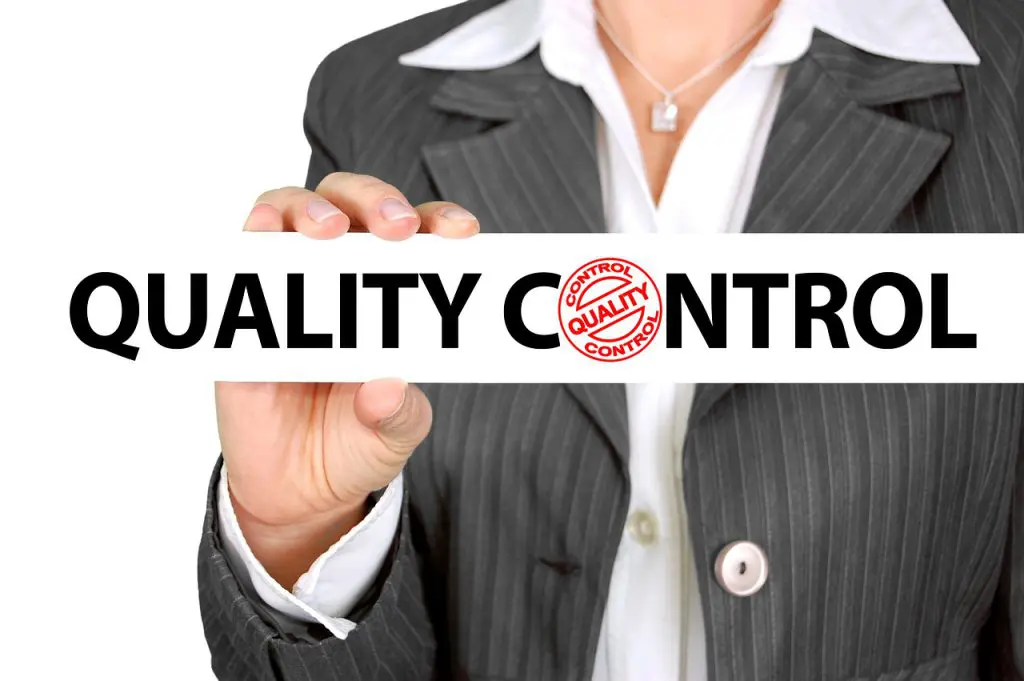Maintaining food safety habits is crucial for a healthy lifestyle. By implementing safe food handling practices, proper food storage techniques, and following food hygiene tips, we can prevent foodborne illnesses and safeguard the well-being of ourselves and our loved ones.
Key Takeaways:
- Practicing safe food handling is vital to prevent foodborne illnesses.
- Properly storing food reduces the risk of harmful bacterial growth.
- Follow recommended cooking methods to ensure the safety of food.
- Cross-contamination can lead to foodborne illnesses, so it’s important to prevent it.
- By adopting essential food safety habits, we can protect ourselves and our families.
The Importance of Safe Food Handling Practices
Safe food handling practices are essential in preventing foodborne illnesses and ensuring the safety of the food we consume. By following established food safety guidelines, implementing proper food handling practices, and maintaining a clean kitchen environment, we can effectively prevent cross-contamination, minimize the risk of bacterial growth, and protect the health of ourselves and our loved ones.
Guidelines for Safe Food Handling
- Keep hot foods hot (above 140°F) and cold foods cold (below 40°F) to avoid the “Danger Zone” temperature range where bacteria multiply rapidly.
- Thoroughly wash hands with soap and warm water for at least 20 seconds before and after handling food, especially raw meats, poultry, seafood, and eggs.
- Prevent cross-contamination by using separate cutting boards and utensils for raw and cooked foods. Clean and sanitize them thoroughly after each use.
- Avoid touching your face, hair, or other surfaces while preparing food to minimize the risk of spreading bacteria.
- Regularly clean and sanitize kitchen surfaces, including countertops, cutting boards, and utensils, to maintain kitchen cleanliness and prevent the growth of harmful pathogens.
“By following safe food handling practices, we can reduce the risk of foodborne illnesses and ensure the safety of the meals we prepare. It is our responsibility to prioritize proper food handling techniques and maintain kitchen cleanliness for the well-being of ourselves and our loved ones.”
Implementing these food safety guidelines and adopting good kitchen hygiene practices are vital steps in minimizing the potential risks of foodborne illnesses. Moreover, by understanding the importance of preventing cross-contamination and practicing proper hand hygiene, we can create a safer and healthier environment in our kitchens.
Proper Food Storage Techniques
Storing food properly is essential for maintaining its quality and preventing foodborne illnesses. By following proper food storage techniques, you can reduce the growth of harmful bacteria and ensure the safety of the food you consume. Here are some tips to help you store your food correctly:
Refrigerator Storage
When it comes to perishable items like meat, poultry, and seafood, refrigeration is crucial. To keep these foods safe and prevent bacterial growth, store them in the refrigerator at or below 40 degrees F (4 degrees C). Make sure to use leak-proof containers or wrap them tightly in plastic wrap or foil to prevent cross-contamination. Also, remember to separate raw and cooked foods in the refrigerator to avoid any potential bacteria transfer.
Freezer Storage
Freezing food not only extends its shelf life but also helps maintain its quality. Set your freezer to 0 degrees F (-18 degrees C) or below to keep the food safe from bacterial growth. Ensure that the packaging is airtight and freezer-safe to prevent freezer burn and maintain the food’s flavor and texture. Label the packages with the contents and date to keep track of their freshness.
Proper Food Storage Chart
| Food Item | Refrigerator Storage | Freezer Storage |
|---|---|---|
| Raw meat (beef, pork, lamb) | 1-2 days | 2-3 months |
| Poultry (chicken, turkey) | 1-2 days | 4-6 months |
| Seafood (fish, shellfish) | 1-2 days | 2-3 months |
| Cooked meat and leftovers | 3-4 days | 2-3 months |
| Canned goods (unopened) | Varies (check label) | 2-5 years |
Remember to always observe the recommended storage times for specific foods to ensure their freshness and safety. By following these guidelines, you can help prevent foodborne illnesses caused by improper food storage and promote the overall well-being of yourself and your loved ones.
Safe Food Preparation and Cooking Methods
When it comes to ensuring the safety of the food we prepare and cook, it is crucial to follow safe practices. By adopting proper food safety tips, safe food preparation techniques, and utilizing safe cooking methods, we can protect ourselves and our loved ones from foodborne illnesses.
Thoroughly Cooking Perishable Foods
One of the most important steps in safe food preparation is to ensure that perishable foods, such as meats and eggs, are thoroughly cooked. Cooking them at the right temperatures not only enhances the taste but also helps kill any harmful bacteria that may be present.
Remember, it’s vital to cook ground meats to an internal temperature of 160 degrees F (71 degrees C) and poultry to an internal temperature of 165 degrees F (74 degrees C) to ensure proper food safety.
Avoiding Cross-Contamination
Cross-contamination, where bacteria from raw foods come into contact with cooked or ready-to-eat foods, is a common cause of foodborne illnesses. To prevent cross-contamination, it is crucial to practice careful food handling.
Always avoid using raw utensils or cutting boards for cooked foods. This simple precaution can go a long way in preventing the spread of harmful bacteria.
Safe Cooking Methods
Using safe cooking methods is another important aspect of food safety. By following recommended cooking temperatures and techniques, we can ensure that our meals are cooked thoroughly and free from potentially harmful bacteria.
Here are some safe cooking methods to keep in mind:
- Grill or broil meats to an appropriate internal temperature
- Bake foods at the recommended temperature for the required duration
- Use a food thermometer to check the internal temperature of cooked foods
By applying these safe food preparation and cooking methods, we can reduce the risk of foodborne illnesses and enjoy meals that are not only delicious but also safe to consume.
| Cooking Method | Recommended Internal Temperature |
|---|---|
| Ground Meats (e.g., hamburgers, meatballs) | 160°F (71°C) |
| Poultry (e.g., chicken, turkey) | 165°F (74°C) |
| Steaks, Roasts, Fish | 145°F (63°C) |
| Pork, Ham | 145°F (63°C) |
| Eggs | 160°F (71°C) |
| Casseroles, Leftovers | 165°F (74°C) |
The Dangers of Cross-Contamination
Cross-contamination is a significant risk factor in food safety, as it can lead to foodborne illnesses. When bacteria from raw foods come into contact with cooked or ready-to-eat foods, it creates a breeding ground for harmful microorganisms. To ensure the safety of your meals and prevent food poisoning, it is crucial to practice good hygiene and take preventive measures to eliminate cross-contamination.
Preventing cross-contamination:
- Use separate cutting boards and utensils for raw and cooked foods.
- Properly wash your hands and surfaces after handling raw meat, poultry, or seafood.
- Avoid using the same plates or utensils that came into contact with raw foods for serving cooked or ready-to-eat dishes.
- Store raw meats, poultry, and seafood in leak-proof containers to prevent their juices from contaminating other foods in the refrigerator.
- Ensure proper cleaning and sanitizing of kitchen surfaces, including countertops, cutting boards, and utensils.
By following these good hygiene practices and taking preventive measures to prevent cross-contamination, you can significantly reduce the risk of foodborne illnesses. Incorporate these habits into your daily food preparation routine to protect the health of yourself and your loved ones.
Conclusion
Adopting healthy cooking habits and safe eating habits is crucial for preventing food poisoning and maintaining overall well-being. By implementing essential food safety practices, you can protect yourself and your loved ones from foodborne illnesses.
Start by practicing safe food handling techniques, such as proper handwashing and keeping hot foods hot and cold foods cold. This helps to prevent the growth of bacteria that can cause foodborne illnesses. Additionally, store perishable items correctly in the refrigerator or freezer to maintain their freshness and reduce the risk of contamination.
When it comes to cooking, follow recommended cooking methods and ensure that perishable foods are cooked thoroughly to kill any harmful bacteria. Use a food thermometer to check the internal temperature and make sure it reaches the appropriate level for each type of food.
Furthermore, practicing good hygiene and preventing cross-contamination are essential. Use separate cutting boards and utensils for raw and cooked foods, and clean all surfaces thoroughly after handling raw meat, poultry, or seafood. By maintaining a clean kitchen environment, you can minimize the risk of cross-contamination and keep your meals safe to consume.

FAQ
What are some safe food handling practices?
Safe food handling practices include keeping hot foods hot and cold foods cold to avoid the “Danger Zone” temperature range, proper handwashing, preventing cross-contamination, and maintaining a clean kitchen environment.
How should I store food properly?
It is important to store perishable items like meat, poultry, and seafood in the refrigerator at or below 40 degrees F and freeze them at 0 degrees F. Using leak-proof containers and separating raw and cooked foods in the refrigerator can also help prevent cross-contamination.
What safe practices should I follow during food preparation and cooking?
Thoroughly cooking perishable foods like meats and eggs is crucial to kill any harmful bacteria. It is important to use proper cooking temperatures, such as cooking ground meats to 160 degrees F and poultry to 165 degrees F. Avoid using raw utensils or cutting boards for cooked foods to prevent cross-contamination.
How can I prevent cross-contamination?
To prevent cross-contamination, use separate cutting boards and utensils for raw and cooked foods, and properly wash hands and surfaces after handling raw meat, poultry, or seafood.
Why are food safety habits important?
Food safety habits are important for preventing foodborne illnesses and protecting your health and the health of your family. By following safe food handling practices, proper food storage, and implementing food hygiene tips, you can reduce the risk of foodborne illnesses.



